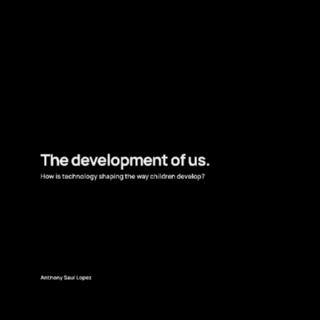| dc.description | Today we see people walking down busy streets with their eyes glued to their phones. The unlimited amount of data at our fingertips and the screens they are on have changed how we act and treat the people around us. How will the relationships we have with our devices influence our development?
The development of us is a systems-oriented design and industrial design pro-ject aimed at seeking to understand these huge questions, to design a product that helps, per the research.
The result is called Dito. Designed to be a child’s first phone, Dito is a screenless voice-powered phone which serves as a starting point for a lifelong relation-ship with technology. It aims to turn a child’s attention away from screens and protect the bond between parent and child during a critical developing age.
Therefore, by influencing their early behavior with technology, the hope is that in the future, they’ll be more likely to connect with the people beside them, and not the devices surrounding them.
Dito’s forms represent a story-driven design. The circular body serves as a physical “OFF” switch for the device. It represents the control we should have over our technology. The rectangular form calls back to the core shape of any smartphone today. It houses Dito’s core features and acts as a recognizable profile they will see later in life. Lastly, the triangular body represents the 3 competing actors in an overarching damaged relationship; the parent, the child, and the technology.
Dito was created by studying the vast topics surrounding child development and technology with optimism. With a belief that while these topics are diffi-cult to answer outrightly, they are important to address none the less. | en_US |
